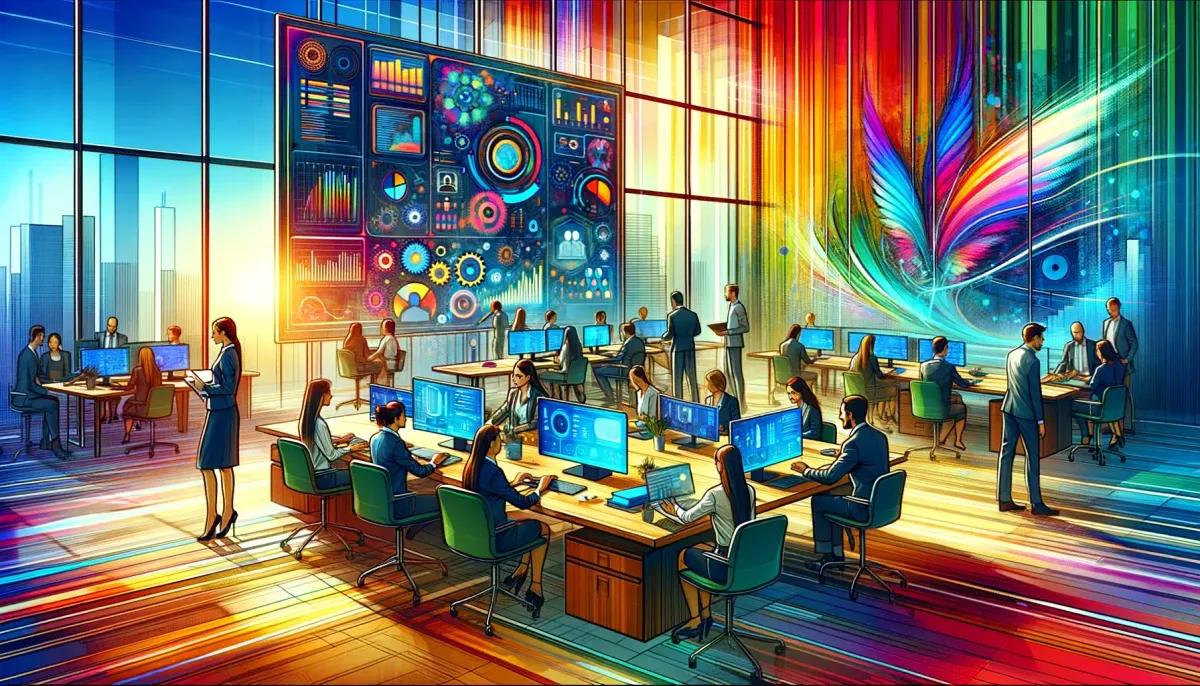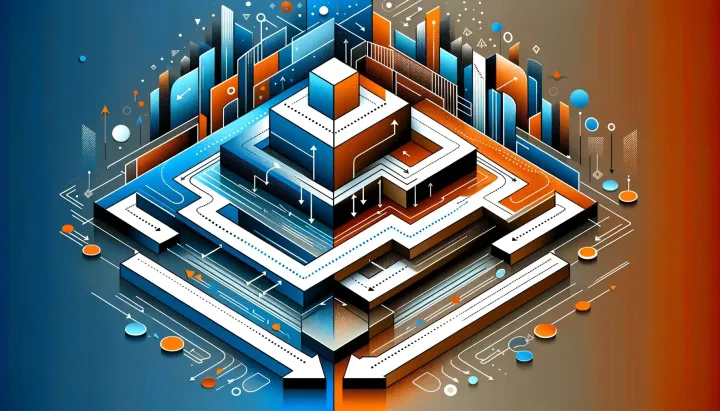What is Employee Management Software?
Discover how employee management software transforms businesses by streamlining HR tasks, enhancing communication, and boosting employee engagement.

Just imagine walking into an office full of life and running seamlessly. All employees are engaged, communication is flawless, and tasks are being carried out smoothly. Sounds like a dream, doesn't it? Well, this dream can become a reality with the right set of tools.
Welcome to the world of employee management software: the unsung hero of the modern workplace. It's not just another set of tech solutions; it's the key to unlocking a harmonious, productive, and engaged workforce.
Let's delve into the world of employee management software and find out how it can change your business for the better, from the inside out.
The Essence of Employee Management Software
Employee management software is a suite of applications intended to streamline different HR functions, from hiring through to retirement.
Just imagine a world where everything, right from tracking attendance, managing payroll, overseeing performance, and even facilitating training, could be done within a single application.
Beyond that, it is a philosophy that emphasizes efficiency, accuracy, and above all, the welfare of the employees. If done well, it will revolutionize the way businesses operate, turning chaos into potential harmonious and effective organizations.
What Employee Management Software Does
Their reasons are as diverse as the businesses themselves but all boil down to one core directive: better management of employees leads to better company outcomes.
Streamlining Administrative Tasks: There's no getting around it, but administrative work involves plenty of paper trails and endless spreadsheets. Employee management software takes these, simmers them down to a massive scale, and then automates many of the mundane, time-consuming tasks that bog down HR departments. This not only saves time but also reduces the risk of errors. This will free human resource professionals from other strategic activities, such as employee engagement and development.
Improved Communication: Communication is at the heart of any successful organization. The employee management software provides platforms for transparent and coherent communication, be it in the form of notices, feedback systems, or collaborative tools. This will result in a culture of transparency and trust—two very vital things in morale and productivity.
Improved Compliance: Keeping up with the labor laws and regulations is a headache. Employee management software helps a business to stay compliant by automatically updating the policies and procedures in line with the current laws. That reduces the risk of expensive fines and legal issues and gives business owners peace of mind.
Improved Employee Engagement: Engaged employees are productive employees. Employee management software improves the motivation of employees at their workplace through performance management, career development, and employee spotlights. When employees see that the company values and supports them, they can move mountains.
The Common Types of Employee Management Software
The area of employee management software is broad and diversified. Let's look at some of the different types that address specific needs in an organization.
Human Resource Information Systems (HRIS)
An HRIS is the backbone of any employee management system. It includes a comprehensive platform for handling a wide range of HR functions that include employee data storage, benefits, and payroll management. Just think of it as the central hub where all HR activities get managed.
Applicant Tracking Systems (ATS)
Recruitment is the lifeline of any organization. ATS software helps in the automation of the recruitment process to offer automatic job posting, résumé screening, and candidate tracking during the cycle of recruitment. It ensures that no potential hire slips through the cracks.
Performance Management Systems
Performance management systems track and measure employee performance. They include goal-setting facilities, performance reviews, and feedback. By providing a clear view of employee performance, the systems assist the management of a company in making appropriate decisions regarding the promotion of employees and improved pay.
Learning Management Systems (LMS)
Continuous learning is very important in this top-shelf business atmosphere. An LMS helps provide a platform for training and development programs. It tracks an employee's progress, assesses their competencies, and ensures they have the necessary skills for their functions.
Time and Attendance Systems
Keeping track of the hours people work is easily a nightmare. Time and attendance systems automate the tracking of work hours, leave, and overtime. This in the process, simplifies payroll and also ensures compliance with labor laws.
Employee Engagement Platforms
Engagement platforms are all about improving morale and building an outstanding workplace culture. It includes tools for the bouquet of conducting surveys, launching recognition programs, and initiating social interaction. They improve community and belonging, an important aspect of employee retention.
Employee Directory Software
In any organization, especially in growing teams, who is who can be a challenge. Employee directory software addresses this by providing a searchable, comprehensive employee profile database. Typically an employee directory will in-depth employee profiles that contain contact details, job titles, personal interests, and skills. This not only helps in fast communication but also in connecting employees, allowing for a more united and more productive environment.
What's the Future of Employee Management Software
The future of employee management software is full of light and expectations. With technology, these systems will improve and bring in more automation, insights, and, in fact, experience into personalization.
Integrations with AI and Machine Learning: AI and machine learning are expected to change the way employee management software works. The amount of data it handles aids in the proper analysis of risks or issues and enhances actionable analytic output. For instance, with the help of AI, organizations can identify employees likely to burn out and suggest the right intervention—not to burn out.
Enhanced Data Security: Threats from cyber sources are always a moving target, which will improve the security features of the employee management software. In the future, behavioral tracking by AI models can also be a vital tool to keep track and intervene during the collapse.
More Tools Focused on Employee Well-being: It is a function of the well-being of the employees themselves. More tools will be there available in the future software that can help in employee mental health, work-life balance, and overall wellness. This holistic approach will help cultivate happier, healthier workplaces.
Seamless Integration with Other Systems: The integration of other business systems will be more seamless. Whether it is financial software, project management tools, or communication platforms, employee management software acts as the center point that connects them all.
Conclusion
Employee management software is but one thread among all the others through which commerce is woven, into the grand tapestry of business, giving cohesion and clarity.
It does not stop at just being designed to ease the HR chores, instead, it is about transforming the workplace into a well-oiled machine where employees are valued, motivated, and empowered. Future employee management software will respond to the changes in business needs and workforce requirements and create a role further.
By embracing a wave of such tools, along with the philosophy they represent, organizations can build a brighter, more effective, and more harmonious future.


